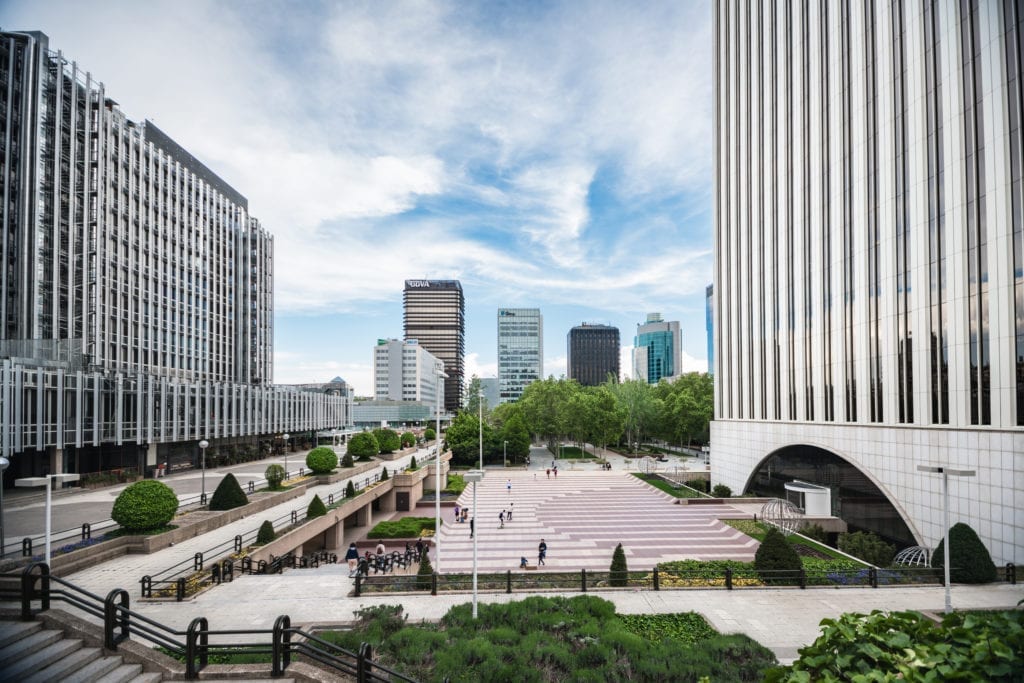14 August 2018
With sales and prices in rapid ascent, the real estate sector is firmly committed to continuing the recovery of the property market in the Andalusian city.
The sixth largest city in Spain, with 569,002 inhabitants in 2017, Malaga is the Andalusian city where housing prices have increased the most in the first quarter of this year, according to data from Urban Data Analytics, with a year-on-year increase of 19.4%. According to data from the Ministry of Development, valuation prices rose by 10.8% to 1,506.8 euros per square meter. The increase was also substantial compared to the fourth quarter of 2017 when the square meter in Malaga was priced at 1,440.40 euros per square meter.
The recovery of the residential property market in the city on Spain’s Costa del Sol can be largely explained by the rapid pace of acquisitions, which are being carried out by domestic and international buyers, and which have steadily increased in recent years. While there were around 3,150 transactions in 2013, there were close to 5,000 in 2015 and over 7,000 in 2017.
Also, compared to the token level of new construction in other Spanish cities, new developments in Malaga have been substantial. Just in the first quarter of 2018, 242 purchases of new homes were finalised in the city, equivalent to 12.3% of the total.
In its report, Vision 2018: the Real Estate Market in Malaga, the consultancy Savills Aguirre Newman notes that the market’s strength in the city will cause the Costa del Sol to reach record sales for the year, adding that Malaga has positioned itself as the main power in Andalusia, even ahead of the capital, Sevilla.
Thus, the consultancy stresses that construction began on 5,236 homes in the Andalusian city, compared to the 2,980 in the capital. As for deliveries, Malaga finished a thousand more homes than Sevilla: 2,580 finished units compared to Sevilla’s 1,511.
Projects underway in Málaga
Faced with this data, operators such as VBare, Inbisa and Quabit have already finalised operations in the city, which also stands out for the demand for land for logistics platforms, large commercial projects and student residences.
In April, Quabit stated that it owns 200,000 square meters of land in the province of Malaga for the construction of 1,700 homes, equivalent to 20% of the developer’s portfolio of land. For its part, VBare completed the acquisition of 14 homes in the city in June for 1.35 million euros for placement on the rental market, for which it expects a profitability of approximately 5.1%. Gilmar, a real estate agency, also chose Malaga’s city centre as the site of its 32nd office.
With the presence of 40,087 companies, of which 87.1% are in the service sector, Malaga’s office market has also once again taken off. Another report by Savills Aguirre Newman places the occupancy rate of offices in the city’s prime area at 90%. Rents are also increasing, reaching 18 euros per square meter in the central street Larios. According to the consultancy, the trend will continue in 2018, which will cause buildings that have been unoccupied for nearly a decade to be taken up. The demand for land for logistics platforms is also increasing in the city, particularly for areas exceeding 5,000 square meters, which are rare.
On the commercial side, one of the larger projects underway is the Designer Outlet Centre, which Sonae Sierra and McArthurGlen have added to the Plaza Mayor shopping centre, with an additional 85,198 square meters (added to the rest of the existing complex), housing a total of 107 stores.
Also, the new wave of student residences has also reached the Andalusian city. Syllabus, a subsidiary of Urbania, will build a new student residence in the historic centre of Malaga in a ten million euro investment. The new development will have 143 rooms and an area of 4,600 square meters and will be ready by 2020.
Lastly, in June, the Malaga City Council approved a project for a luxury macro hotel in the city’s port. The hotel will be a 150-meter-high, 45,000-square-meter building that will be developed by the Qatari investor Abdullah Al Darwish. The building, which will involve an investment of 116 million euros and will be located in the Dique de Levante, will begin construction in 2020 and will be inaugurated three years later.
Original Story: EjePrime – C. De Angelis
Translation: Richard Turner

 Portugal
Portugal  Italy
Italy  Greece
Greece 







